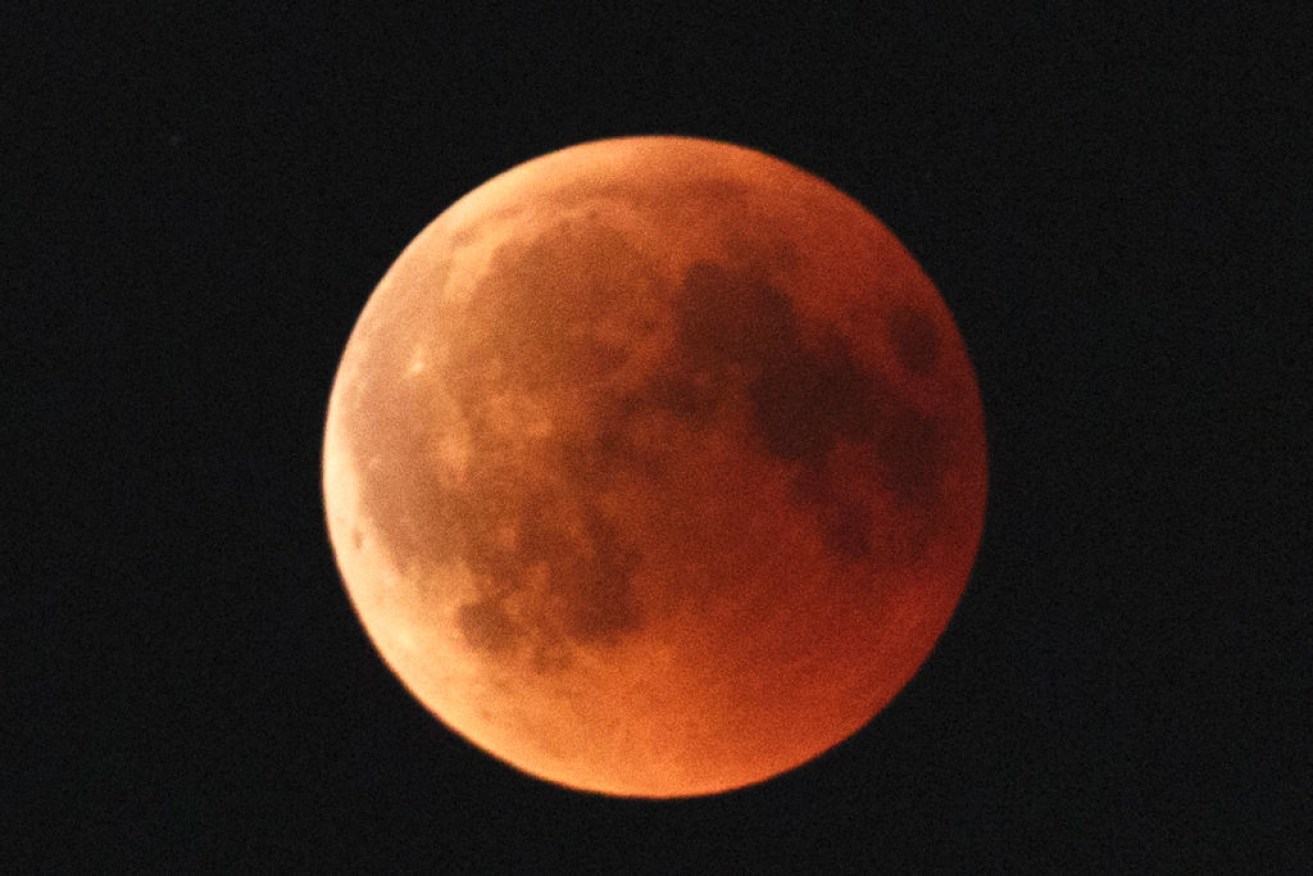Lunar eclipse: Blood Moon appears in longest such event of the 21st century

NASA ran a live webcast of the event, meaning stargazers from around the world could watch this rare event. Photo: Getty
Australians looking to the sky early on Saturday saw the Moon turn red during this century’s longest lunar eclipse.
The total eclipse lasted one hour, 42 minutes and 57 seconds, though a partial eclipse preceded and followed it, meaning the Moon spent a total of three hours and 54 minutes in the Earth’s umbral shadow, according to NASA.
It was visible at different times in Australia, Africa, Asia, Europe and South America when the Sun, Earth and Moon lined up perfectly.
A total lunar eclipse occurs when the Earth’s shadow moves across the Moon, blocking out light from the Sun.

A full moon during the ‘blood moon’ eclipse behind the ancient Colosseum in Rome. Photo: Getty
Andrew Jacob, curator at the Sydney Observatory, said hundreds of people had paid to watch the event from the observatory.
“Our event is sold out,” he said.
“We have about a couple of hundred people that are booked in to come and watch it with us.”

The lunar eclipse watched by Sydney-siders. Photo: Getty
Andrew Fabian, professor of astronomy at the University of Cambridge, explained how the Moon took on the red hue.
“It’s called a blood Moon because the light from the Sun goes through the Earth’s atmosphere on its way to the Moon, and the Earth’s atmosphere turns it red in the same way that when the sun goes down it goes red,” he said.

Star-gazers gather on the Teufelsberg or ‘Devil Mountain in Berlin. Photo: Getty
Mars is currently traveling closer to Earth than it has since 2003, so some observers overnight might have also seen what looked like an orange-red star, but it was in fact the red planet.
Robert Massey, deputy executive director of the Royal Astronomical Society, said it was a “very unusual coincidence to have a total lunar eclipse and Mars at opposition on the same night”.
While Saturday’s lunar eclipse was long, they can be longer – up to one hour and 47 minutes.
The longest eclipse of the 20th century fell on July 16, 2000. It lasted one hour, 46 minutes and 24 seconds.
The next eclipse to last that long will occur on June 9, 2123, but it will not be visible from Australia.
Rio de Janeiro’s spectators cheered when the blood Moon emerged from the fog.
Hundreds of people watched at a fort overlooking the iconic Copacabana Beach and Sugarloaf Mountain. The local planetarium set up telescopes for astrology fans.

The blood moon eclipse seen between a statue of the ancient Greek Goddess Hera (R) and God Apollo in central Athens. Photo: Getty
“These telescopes are fantastic. It’s one thing to see pictures of the planets in a book and another to see it in real life,” said Ana Selma Ferreira, who brought her children to the spectacle.
Across Africa people turned to the sky, watching the reddish shadow slide up the moon’s surface. In Somalia, some hurried to mosques for special prayers.
In South Sudan, some dared to take photos in a country where using a camera in public is discouraged.
In Ethiopia’s capital, Addis Ababa, people at an open-air restaurant admired a rare clear view during the rainy season, comparing a live NASA webcast to what they saw above. Then clouds rolled in.
North America missed out on Friday’s lunar eclipse but can look forward to the next one on Jan. 21, 2019, according to NASA.








